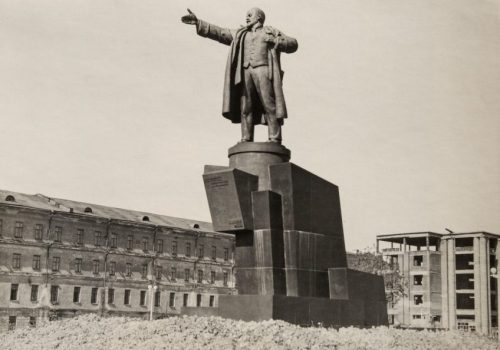An exhibition at Rosphoto in Saint Petersburg presents architectural and aerial photographs of the 1920s and the first half of the 1930s from the collection of the KGIOP (Committee for the State Preservation of Historical and Cultural Monuments).
The Great Russian Revolution of 1917 was one of the most significant events in modern history, having impacted tremendously the paths of development of many countries of the world, primarily European states. Not only the Revolution led to the collapse of the Russian Empire, but it also triggered the decline of three other great monarchies: the German, Austro-Hungarian, and Ottoman Empires. Its influence was evident in all domains of public life: in economy, politics, and culture. One of the most important aspects of this influence was a shift in attitude towards the cultural and historical heritage. In the course of the Revolution of 1917, the power was seized by people with a different scale of values, which led to the inevitable reappraisal of the past. The past was subject to radical criticism and revision accompanied by an extremely selective attitude towards the history and culture of the preceding epochs. Artifacts and events that had previously been regarded as important were reconsidered as insignificant or even hostile. Heritage began to bear the burden of ideology and to serve the purposes of glorifying or discrediting various phenomena, artifacts, or people. A great part of pre-revolutionary cultural and historical heritage was destroyed. At the same time, the Revolution brought forth the formation of the next cultural layer: artifacts, monuments, architectural ensembles and trends of the new era.
After the triumph of the Revolution of 1917, a new chapter began in the history of St. Petersburg—a city that, as Dr. D. S. Likhachev put it, “defined the face of the 20th century more than any other place.” In June 1919, the Petrograd Planning Council was formed, with an architectural workshop under the supervision of I. A. Fomin, one of the most prominent architects of that time. The architects faced the task of eliminating the 19th-century contrast between the city center and the workers’ outskirts. In 1924–1925, development of the territories that used to be desolated and neglected began, in accordance with an elaborate unified plan. New housing blocks appeared, as well as cultural, educational, and administrative buildings, such as Houses of the Soviets, Houses of Culture, disease prevention centers, factory kitchens, schools, medical institutions, and sport facilities. Large-scale developmental works were conducted in the central part of the city where many streets were realigned and improved, new squares were created, new buildings, boulevards, public gardens, and granite embankments appeared. However, not all of the architectural and planning concepts could be considered positive transformations. A significant amount of architectural landmarks was destroyed; religious buildings suffered the most. Yet, there is no doubt that the Great Russian Revolution of 1917 provided an impetus towards shaping the modern architectural image of the city.
The aim of this exhibition is not to show the course of the events of the Revolution, but rather to represent the impact of those events on the future of the city. Looking at the photographs of the 1920s and the first half of the 1930s from the collection of the KGIOP (Committee for the State Preservation of Historical and Cultural Monuments), we can vividly imagine the beginning of the transformation and feel the tragic and glorious character of those years reflected in the image of the city, forever imprinted in its soul.
Revolution and Heritage / Heritage of Revolution
Through December 12, 2017
Rosphoto
Bol’shaya Morskaya Ulitsa, 35
Saint-Peterburg 190000
Russia
http://rosphoto.org/en/
















